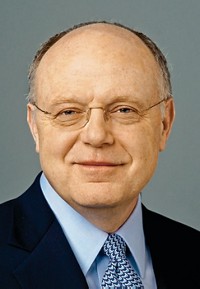Advertisement
Grab your lab coat. Let's get started
Welcome!
Welcome!
Create an account below to get 6 C&EN articles per month, receive newsletters and more - all free.
It seems this is your first time logging in online. Please enter the following information to continue.
As an ACS member you automatically get access to this site. All we need is few more details to create your reading experience.
Not you? Sign in with a different account.
Not you? Sign in with a different account.
ERROR 1
ERROR 1
ERROR 2
ERROR 2
ERROR 2
ERROR 2
ERROR 2
Password and Confirm password must match.
If you have an ACS member number, please enter it here so we can link this account to your membership. (optional)
ERROR 2
ACS values your privacy. By submitting your information, you are gaining access to C&EN and subscribing to our weekly newsletter. We use the information you provide to make your reading experience better, and we will never sell your data to third party members.
Business
Actavis Buys Forest Labs
Acquisition: Deal will create large specialty drug firm
by Lisa M. Jarvis
February 21, 2014
| A version of this story appeared in
Volume 92, Issue 8
PATH TO A DEAL
Revamp year for Forest Labs preceded its acquisition.
April 2013 Fiscal year results show sales down 31% and earnings down 88% from prior year.
September 2013 Brent Saunders, fresh off the sale of Bausch & Lomb, is appointed president and CEO.
December 2013 U.S. rights to schizophrenia treatment Saphris are acquired from Merck & Co. for $240 million.
December 2013 Cost-savings plan worth $500 million is launched; 500 jobs are cut.
January 2014 Aptalis, a specialty firm focused on gastrointestinal and cystic fibrosis drugs, is acquired for $2.9 billion.
February 2014 Actavis proposes $25 billion acquisition.
SOURCE: Forest Labs
The generic drug maker Actavis will shell out $25 billion in cash and stock to acquire Forest Laboratories. The deal will combine a leader in generics with a producer of specialty pharmaceuticals that has gone through a major revamping over the past year.
The combination creates “a new kind of specialty pharmaceutical company, and one that’s really grounded in something different—a generic DNA,” Actavis CEO Paul M. Bisaro says. About half of the combined company’s sales, which are expected to top $15 billion in 2015, will come from specialty, or niche, pharmaceuticals; previously, just 30% of Actavis’s revenues came from that segment. Generic drugs, over-the-counter medicines, and, eventually, biosimilars will make up the rest of the portfolio.
For Forest, the deal culminates a striking turnaround. Since 2009, activist investor Carl Icahn has been pushing the company to either make a big purchase or sell itself. For years, he accused Forest management of not being prepared for generic competition to the company’s top-selling drug, Lexapro. The antidepressant, which once had annual sales of more than $2.0 billion, lost patent protection in March 2012. Forest’s sales and earnings promptly went into free fall.
In September 2013, Brent L. Saunders, fresh off the sale of Bausch & Lomb to Valeant Pharmaceuticals, was brought in to run Forest. Saunders quickly made acquisitions and took cost-cutting measures to right the firm’s course. In the six months since his appointment, Forest’s share price has risen more than 70%, and sales and earnings have returned to growth.
Actavis itself is a transformation story. An Icelandic producer of generic drugs, Actavis was bought by U.S. rival Watson Pharmaceuticals in 2012. The merged company took the Actavis name and in October 2013 acquired Dublin-based specialty drug firm Warner Chilcott. That deal bolstered the women’s health and urology drug portfolios of Actavis while adding businesses in gastroenterology and dermatology treatments.
The Forest acquisition adds several new therapeutic franchises. The companies expect to find roughly $1 billion in annual savings on top of a $500 million cost-cutting program already under way at Forest.
Analysts are positive on the deal but caution that the combined firm needs work. “This transaction represents the beginning of a new line of strategic initiatives for Actavis,” Cowen & Co. stock analyst Ken Cacciatore said in a note to investors. Cacciatore argues that Actavis gains a company still in need of some elbow grease to be successful.
Randall S. Stanicky, a stock analyst at RBC Capital Markets, sees more deals in Actavis’s future. “Expect more mergers and acquisitions,” he told clients. In addition, Stanicky and other analysts say the combination foretells broader consolidation in the specialty pharmaceuticals sector.







Join the conversation
Contact the reporter
Submit a Letter to the Editor for publication
Engage with us on Twitter